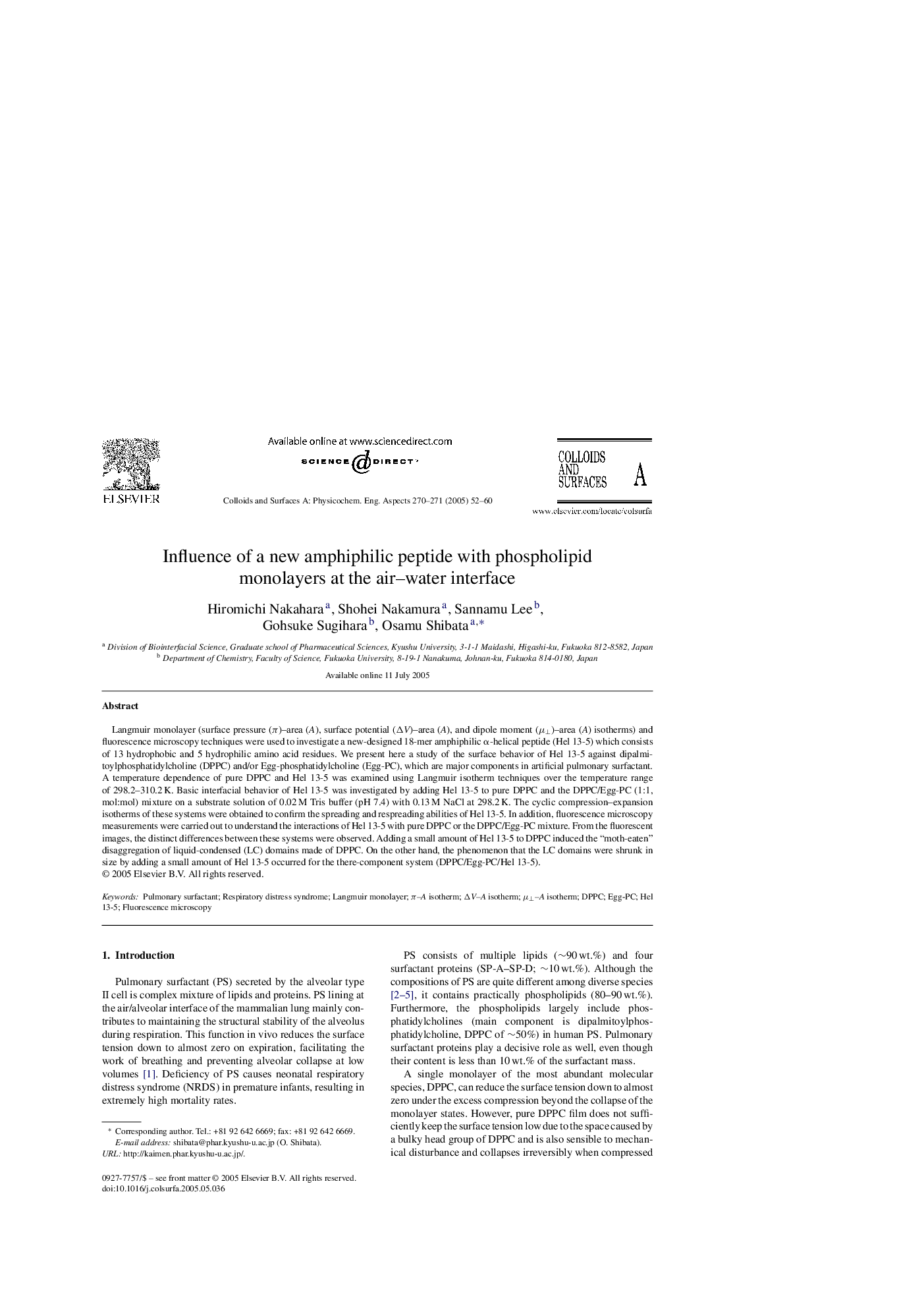| Article ID | Journal | Published Year | Pages | File Type |
|---|---|---|---|---|
| 9675520 | Colloids and Surfaces A: Physicochemical and Engineering Aspects | 2005 | 9 Pages |
Abstract
Langmuir monolayer (surface pressure (Ï)-area (A), surface potential (ÎV)-area (A), and dipole moment (μâ¥)-area (A) isotherms) and fluorescence microscopy techniques were used to investigate a new-designed 18-mer amphiphilic α-helical peptide (Hel 13-5) which consists of 13 hydrophobic and 5 hydrophilic amino acid residues. We present here a study of the surface behavior of Hel 13-5 against dipalmitoylphosphatidylcholine (DPPC) and/or Egg-phosphatidylcholine (Egg-PC), which are major components in artificial pulmonary surfactant. A temperature dependence of pure DPPC and Hel 13-5 was examined using Langmuir isotherm techniques over the temperature range of 298.2-310.2 K. Basic interfacial behavior of Hel 13-5 was investigated by adding Hel 13-5 to pure DPPC and the DPPC/Egg-PC (1:1, mol:mol) mixture on a substrate solution of 0.02 M Tris buffer (pH 7.4) with 0.13 M NaCl at 298.2 K. The cyclic compression-expansion isotherms of these systems were obtained to confirm the spreading and respreading abilities of Hel 13-5. In addition, fluorescence microscopy measurements were carried out to understand the interactions of Hel 13-5 with pure DPPC or the DPPC/Egg-PC mixture. From the fluorescent images, the distinct differences between these systems were observed. Adding a small amount of Hel 13-5 to DPPC induced the “moth-eaten” disaggregation of liquid-condensed (LC) domains made of DPPC. On the other hand, the phenomenon that the LC domains were shrunk in size by adding a small amount of Hel 13-5 occurred for the there-component system (DPPC/Egg-PC/Hel 13-5).
Keywords
Related Topics
Physical Sciences and Engineering
Chemical Engineering
Colloid and Surface Chemistry
Authors
Hiromichi Nakahara, Shohei Nakamura, Sannamu Lee, Gohsuke Sugihara, Osamu Shibata,
